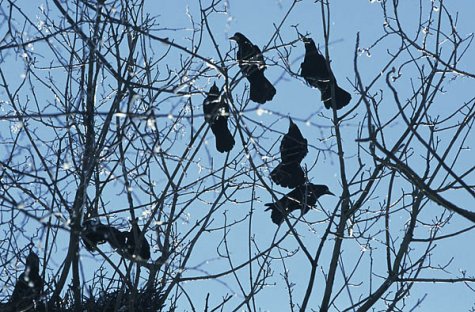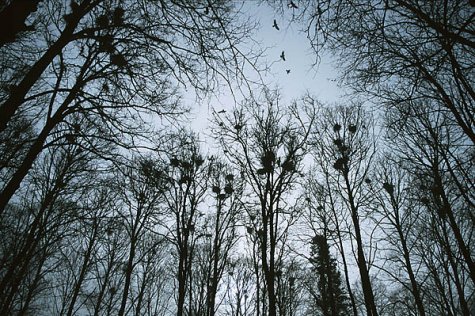Black-plumaged large spring heralds
Photos: Arne Ader
Translation: Liis
Rooks in the Puhja nesting colony
Rook Künnivares Corvus frugilegus
Since the last decade of the previous century rooks have become the first ”spring heralds” among our birds. Earlier starlings, skylarks and lapwings were looked for as the first to arrive. The wintering population is small in numbers but around ten thousand pairs arrive here to nest.
Regarding size the rooks are in the same category as hooded crows but their cawing is somehow hoarser compared to hooded crows. Males weigh around 400 grams, the females are a little lighter but all look alike – a black plumage shimmering in violet in the sun. The area around the beak is naked in adult birds and the beak base is yellowish-bonecoloured.
The earlier arrival hints at a climate warming and in the breeding colonies the birds want to be in place early to occupy the best and most secure nesting spots in the centre of the colony – but these must be fought for and one’s nest spot must be defended against cospecifics-competitors. The ”division of labour” in the family is as follows – the male provides building materials and upkeep of the nest. The female is the nest decorator, she watches out that the neighbours won’t carry away anything useful from the nest – should something happen the quarrel engulfs the whole colony and this ”something” happens in the colony almost all the time …
The only thing that might console a human settler in a rook colony’s nearest neighbourhood is that this noise and fouling only lasts for a quarter of the year – but still annoying. Nesting starts with the warmer weather of April
By now rooks have already reached the northern coast.
Rook observations: LINK
Rook colony in Puhja










